The Prodoxidae are a family of moths, generally small in size and nondescript in appearance. They include species of moderate pest status, such as the currant shoot borer, and others of considerable ecological and evolutionary interest, such as various species of "yucca moths".

Notodontidae is a family of moths with approximately 3,800 known species. The family was described by James Francis Stephens in 1829. Moths of this family are found in all parts of the world, but they are most concentrated in tropical areas, especially in the New World.

The buff-tip is a moth of the family Notodontidae. It is found throughout Europe and in Asia to eastern Siberia. The species was first described by Carl Linnaeus in his 1758 10th edition of Systema Naturae.

Manduca quinquemaculata, the five-spotted hawkmoth, is a brown and gray hawk moth of the family Sphingidae. The caterpillar, often referred to as the tomato hornworm, can be a major pest in gardens; they get their name from a dark projection on their posterior end and their use of tomatoes as host plants. Tomato hornworms are closely related to the tobacco hornworm Manduca sexta. This confusion arises because caterpillars of both species have similar morphologies and feed on the foliage of various plants from the family Solanaceae, so either species can be found on tobacco or tomato leaves. Because of this, the plant on which the caterpillar is found does not indicate its species.

Lampronia standfussiella is a moth of the family Prodoxidae. It is found in central Europe, including the Alps, Germany, Austria and Poland, north to Finland and Sweden and northern Russia.

Lampronia corticella, the raspberry moth, is a moth of the family Prodoxidae. The species was first described by Carl Linnaeus in his 1758 10th edition of Systema Naturae. It is found in most of Europe, except Iceland, the Iberian Peninsula and the Balkan Peninsula. It is an introduced species in North America, where it was first detected in New Brunswick, Canada, in 1936.
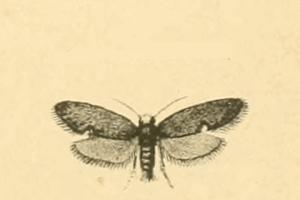
Lampronia aeripennella is a moth of the family Prodoxidae. It is found in Sweden, Finland, France, Austria, Italy and Romania.

Lampronia is a genus of moths of the family Prodoxidae.
Lampronia intermediella is a moth of the family Prodoxidae. It is found in Slovakia and Romania.
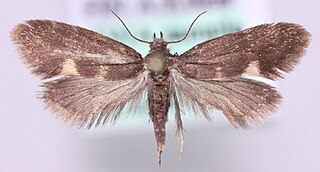
Lampronia morosa is a moth of the family Prodoxidae. It is found in most of Europe, except Ireland, Latvia, Lithuania, Portugal and part of the Balkan Peninsula. It is also present in the Caucasus and Asia Minor.

Lampronia provectella is a moth of the family Prodoxidae. It is found in France, Germany, Switzerland, Austria, Poland, the Czech Republic, Slovakia and Romania. It is also present in Russia east to the Altai Mountains.
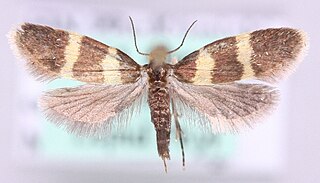
Lampronia redimitella is a moth of the family Prodoxidae. It is found in Fennoscandia, the Baltic region, Poland, the Czech Republic and Germany.
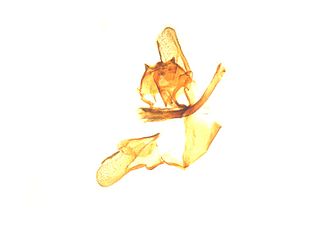
Lampronia pubicornis is a moth of the family Prodoxidae. It is found in Ireland, Great Britain, France, Spain, Germany, Austria, Hungary and on Sicily, in addition to Venice and occasionally mainland Italy.
Lampronia oregonella is a moth of the family Prodoxidae. In North America it is found in British Columbia, Washington, Oregon and Colorado.
Lampronia aenescens is a moth of the family Prodoxidae first described by Walsingham in 1888. In North America it is found in Alberta and ranges west and south through southern British Columbia to northern California and Colorado.
Lampronia sublustris is a moth of the family Prodoxidae first described by Annette Frances Braun in 1925. In North America it is found from southern British Columbia south to northern California and east to Alberta, Utah and Colorado.
Euhyponomeutoides albithoracellus, the currant bud moth, is a moth of the family Yponomeutidae. It is found in Fennoscandia, Denmark, Germany, Poland, the Baltic region, Romania, Slovakia, Austria, Switzerland and France.

Choristoneura lafauryana, the strawberry leafroller, is a species of moth of the family Tortricidae. It is found in Spain, Great Britain, the Netherlands, Belgium, France, Germany, Switzerland, Italy, Romania and Russia. In the east, the range extends to China, Korea and Japan.
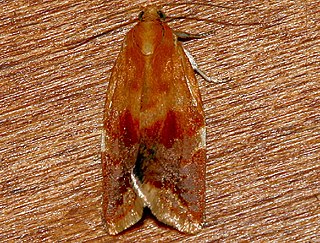
Clepsis persicana, the white triangle tortrix or the green needleworm, is a species of moth of the family Tortricidae. It is found in North America, where it has been recorded from Alaska and British Columbia to Newfoundland and south to Virginia and west to California. The habitat consists of coniferous and mixed coniferous forests.
Pandemis pyrusana, the apple pandemis or pandemis leafroller moth, is a species of moth of the family Tortricidae. The species was first described by William D. Kearfott in 1907. It is found in North America, where it has been recorded from Alberta to British Columbia, south through Idaho, Utah and Colorado and California. The habitat consists of forests with deciduous trees and shrubs.












